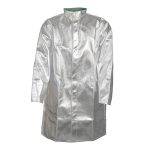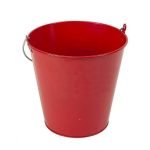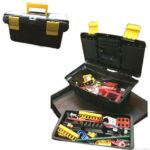Your list is empty, add products to the list to send a request
Top Fire Safety Supplies and Equipment for Your Needs

04
Sep
Fire safety is a critical aspect of any home, workplace, or public space. Being prepared with the right equipment can mean the difference between a minor incident and a catastrophic event. In this comprehensive guide, we’ll explore essential fire safety supplies and equipment to help you protect lives and property.
Fire Extinguishers: Your First Line of Defense
Fire extinguishers are the most common and vital fire safety tools. There are various types designed for different fire classes:
- ABC Stored Pressure Fire Extinguisher: This versatile option is suitable for most common fire types.
- CO2 Fire Extinguisher: Ideal for electrical fires, CO2 fire extinguisher cylinders are available in various sizes, including 1kg, 3kg, 4.5kg, and 9kg models.
- Foam Type Fire Extinguisher: Effective against flammable liquid fires.
- Kitchen Fire Extinguisher: Specially designed for cooking oil fires, also known as Class K extinguishers.
- Clean Agent Fire Extinguisher: Perfect for areas with sensitive equipment, as it leaves no residue.
- DCP Extinguisher: Dry chemical powder extinguishers are versatile and effective.
- Water Type Fire Extinguisher: Suitable for Class A fires involving ordinary combustibles.
For added convenience, consider options like the fire extinguisher ball or throw fire extinguisher, which can be easily tossed into a fire zone.
Fire Detection Systems
Early detection is crucial for fire safety. Here are some essential detection devices:
- Smoke Detectors: Devices like the Agni smoke detector offer reliable fire detection.
- Heat Detectors: These are ideal for areas where smoke detectors might cause false alarms.
- Multi Sensor Detector: Combines smoke and heat detection for comprehensive coverage.
- Beam Detector: Ideal for large, open spaces like warehouses or atriums.
- Gas Leak Detectors: Devices like the LPG gas leak detector or CNG gas leak detector can prevent fire incidents caused by gas leaks.
Fire Alarm Systems
A proper fire alarm system is crucial for alerting occupants in case of a fire:
- Fire Alarm Panels: Products like the Ravel fire panel or EST3 fire alarm panel serve as the central control for fire detection systems.
- Manual Call Points: Allow occupants to manually trigger the alarm in case of fire.
- Hooter Alarms: Provide audible warnings to alert people of a fire.
- Response Indicators: Visual indicators that show which detector has been activated.
- Repeater Panels: Display fire alarm information in multiple locations.
Fire Suppression Systems
For larger spaces or areas with specific risks, consider these fire suppression systems:
- Sprinkler Systems: Including upright sprinklers, pendent type sprinklers, and sidewall sprinklers.
- Sprinkler Heads: The actual devices that release water in case of fire.
- Fire Hose Reels: Including hose reel drums and hose reel pipes for manual firefighting.
- Fire Hydrant Systems: Consisting of hydrant valves, landing valves, and breeching inlets.
- Foam Systems: Using mechanical foam fire extinguishers for specific fire risks.
Personal Protective Equipment (PPE)
Proper PPE is essential for those who may need to fight fires or escape from fire-affected areas:
- Safety Shoes: Brands like Liberty, Hillson, Bata Hunter, and Atom offer various safety shoe options.
- Fire Safety Gloves: Protect hands from heat and flames.
- Kevlar Jackets and Kevlar Aprons: Provide high-level protection against heat and flames.
- Aluminized Coats: Reflect radiant heat for added protection.
- Breathable Safety Shoes: Offer comfort and protection for long-term wear.
Emergency Lighting and Signage
In case of power failure during a fire, proper lighting and signage are crucial:
- Emergency Exit Lights: Guide people to safety in case of power failure.
- Emergency Lights: Provide illumination during evacuations.
- Industrial Emergency Lights: Robust options for harsh environments.
- Maintained Emergency Lights: Stay on continuously and switch to battery power during outages.
Fire Safety Accessories
Various accessories complement your fire safety equipment:
- Fire Extinguisher Hanger Hook: Properly store and display extinguishers.
- Rosette Plate: Decorative cover for fire sprinkler heads.
- Fire Axe: For breaking through obstacles during evacuation.
- Fiberglass Extension Poles: Used for testing and maintaining smoke detectors.
- Solo A10 Smoke Detector Tester: Professional-grade tool for testing smoke alarms.
Specialized Fire Safety Equipment
Some areas or industries require specialized fire safety equipment:
- 4 Way Fire Brigade Inlet: Allows multiple fire hoses to be connected to a single water source.
- Cartridge Type Fire Extinguisher: Uses a separate cartridge to pressurize the extinguishing agent.
- Trolley Mounted Fire Extinguisher: Large, mobile extinguishers for industrial settings.
- Modular Type Fire Extinguisher: Can be refilled quickly by replacing modules.
- Automatic Fire Extinguisher: Self-activates when detecting fire, ideal for unmanned areas.
Fire Hose Accessories
Ensure your fire hoses are properly equipped and stored:
- Fire Hose Boxes and Firehose Cabinets: Protect and organize fire hoses.
- Male Coupling Fire Hose: Connect hoses to water sources or other hoses.
- Revolving Branch Pipe: Allows for adjustable water flow and spray patterns.
- Short Branch Pipe Nozzle: Compact nozzle for confined spaces.
Importance of Regular Maintenance
All fire safety equipment requires regular maintenance to ensure it functions properly when needed. This includes:
- Regular inspections of fire extinguishers, checking pressure gauges and overall condition.
- Testing of fire alarm systems, including smoke detectors and manual call points.
- Maintenance of fire suppression systems, including sprinklers and fire hoses.
- Checking and replacing batteries in emergency lighting systems.
- Ensuring all signage is visible and in good condition.
Choosing the Right Equipment for Your Needs
When selecting fire safety equipment, consider the following factors:
- Type of Facility: Different buildings and industries have different fire risks and requirements.
- Local Regulations: Ensure your fire safety equipment meets all local codes and standards.
- Size of the Area: Larger spaces may require more extensive fire suppression systems.
- Potential Fire Hazards: Identify specific risks in your environment and choose equipment accordingly.
- Budget: While fire safety is crucial, consider cost-effective options that meet your needs.
Training and Education
Having the right equipment is only part of the equation. Proper training and education are essential for effective fire safety:
- Conduct regular fire drills to familiarize occupants with evacuation procedures.
- Train designated personnel on the proper use of fire extinguishers and other equipment.
- Educate all occupants on fire prevention measures and what to do in case of a fire.
- Keep updated on the latest fire safety technologies and best practices.
Emerging Technologies in Fire Safety
The field of fire safety is constantly evolving, with new technologies emerging to enhance protection:
- Smart Fire Detection Systems: These systems use artificial intelligence to reduce false alarms and provide more accurate fire detection.
- Wireless Fire Alarm Systems: Offer easier installation and more flexibility in building layouts.
- Video-based Fire Detection: Uses advanced image processing to detect fires in large or complex spaces.
- Mobile Fire Safety Apps: Provide real-time information and guidance during emergencies.
- IoT-enabled Fire Safety Devices: Allow for remote monitoring and management of fire safety systems.
Environmental Considerations
As sustainability becomes increasingly important, consider eco-friendly fire safety options:
- Clean Agent Fire Extinguishers: Use environmentally friendly extinguishing agents.
- Water Mist Systems: Use less water than traditional sprinkler systems, reducing water damage.
- Recyclable Fire Extinguishers: Some manufacturers offer recyclable options to reduce waste.
- Energy-efficient Emergency Lighting: LED-based systems consume less power and last longer.
Conclusion
Fire safety is a critical aspect of protecting lives and property. By investing in the right fire safety supplies and equipment, maintaining them properly, and ensuring proper training, you can significantly reduce the risk of fire-related incidents and their potential impact.
Remember, fire safety is an ongoing process that requires constant vigilance and updating. Stay informed about the latest technologies and best practices in fire safety to ensure the best protection for your home, workplace, or public space.
Frequently Asked Questions (FAQs)
Q1: How often should fire extinguishers be inspected? A: Fire extinguishers should be visually inspected monthly and undergo professional maintenance annually.
Q2: What’s the difference between a smoke detector and a heat detector?
A: Smoke detectors sense the presence of smoke particles, while heat detectors respond to a rise in temperature.
Q3: Are all fire extinguishers suitable for all types of fires?
A: No, different fire extinguishers are designed for different classes of fires. It’s important to use the correct type for the specific fire risk.
Q4: How often should fire alarm systems be tested?
A: Fire alarm systems should be tested at least once a month, with a more comprehensive check by a professional annually.
Q5: What’s the importance of emergency lighting in fire safety?
A: Emergency lighting ensures visibility for safe evacuation during power outages that often accompany fire incidents.
At FireSupplies, we’re committed to providing top-quality fire safety equipment and expert guidance to keep you, your loved ones, and your property safe. Don’t wait for a fire to strike – be prepared with the right tools and knowledge. Visit our website or contact our team of fire safety experts today to ensure you have the best protection against fire hazards. Remember, when it comes to fire safety, it’s always better to be overprepared than underprepared. Let FireSupplies be your partner in creating a safer environment for everyone.


























